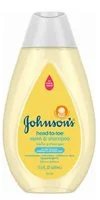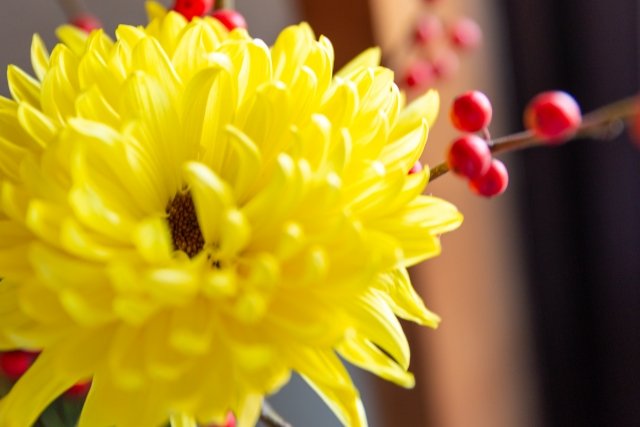CASE STUDY
Patient: 48, F
Her symptoms include:
Hot flushes
Night sweats
Frequent urination, waking up 2-3 times at night to urinate
Insomnia
Backache
Hair loss, nails breaking easily
Anxiety and mood swings
Poor memory
Slightly cold feet
Tongue: Red tongue with a somewhat rootless coating
Pulse: Weak and Deep pulse on both Rear positions, Rapid and Overflowing on both Front positions
Case History:
A 48-year-old female patient visited our clinic for her menopausal problems for two years. Her gynecologist recommended HRT (Hormone replacement therapy). She tried it for three months before she could no longer tolerate its severe side effects, such as stomach cramps, headache, and nausea. (HRT involves replacing estrogen and progesterone through pills and patches. While it helps many get through menopause, the side effects may affect some women.)
TCM Diagnosis:
Most of this patient's symptoms are due to a deficiency of Kidney-Yin with Empty Heat affecting the Heart and harassing the Mind. The symptoms of Kidney-Yin deficiency include hot flashes, night sweats, a Red tongue with a slightly rootless coating, and Weak and dry dull pulses. The Red symptoms of Empty Heat affecting Heart and harassing the Mind are dizziness, anxiety, mood swings, insomnia, and a pulse that is Rapid and Overflowing on both Front positions. In this case, there is an overlap of Kidney-Yin and Kidney-Yang deficiency. However, the primary condition is one of Kidney-Yin deficiency; there is also some Kidney-Yang deficiency, as evidenced by the slightly cold feet and frequent urination.
TreatmentKidney-Yang
The treatment principle adopted was to nourish Kidney nd Heart Yin, clear Heart Empty Heat, and calm the Mind; a secondary aim was to tonify Kidney Yang. She was treated with acupuncture and Herbal medicine.
1. Acupuncture
Acupuncture is a technique for balancing the flow of energy - a life force (chi or qi) that flows through pathways (meridians) in the body, inserting thin needles into specific points on the skin. Acupuncture is known to be effective for reducing the frequency of menopausal symptoms. A recent study found that five weeks of acupuncture reduced hot flashes, night sweats, mood swings, and sleep disruptions in women dealing with menopause.
Acupuncture points selected, including:
LU-7 Lieque and KI-6 Zhaohai - to regulate the Directing Vessel, strengthen the Uterus and nourish Kidney-Yin.
Ren-15 Jiuwei - to calm the Mind and clear the Heart.
Ren-4 Guanyuan - to nourish the Kidneys and calm the Mind.
Du-24 Shenting and G.B.-13 Benshen - to calm the Mind.
Du-20 Baihui to lift depression.
HE-6 Yinxi and KI-7 Fuliu - to stop night-sweating and clear Heart Empty Heat.
SP-6 Sanyinjiao - to nourish Yin, calm the Mind and promote sleep.
—We scheduled weekly Acupuncture treatment for the patient. After four weeks, her symptoms improved significantly besides occasional Hot flashes. So we added Herbal therapy to her.
2. Herbal Therapy:
Base formula: Zhi Bai Di Huang Wan- 知柏地黃丸 - Anemarrhen Rehmannia Eight Formula
Formula Principles:
Enriches Yin, Nourishes the Essence of the Liver and Kidneys, Reduces Deficiency Fire
Ingredients:
Shu Di Huang Rehmannia Root
Shan Zhu Yu Cornus Fruit
Shan Yao Dioscorea Rhizome
Ze Xie Alisma Rhizome
Mu Dan Pi Moutan Bark
Zhi Mu Anemarrhena Rhizome
Huang Bai Phellodendron Bark
Fu Ling Poria
TCM Pattern:
Kidney Yin deficiency with Fire flaring
Fire flaring with liver and kidney Yin deficiency
Steaming bone disorder
Damp-Heat in the lower Jiao
Dosage (for pills):
5-7 pills 2-3 times daily before meals, Take with warm water
Course of treatment
1-2 months
Cautions & Contraindications
Use with caution in those with spleen and stomach deficient cold.
—-After a month of Herbal therapy along with Acupuncture, the patient’s Hot flushes reduced by 50%.
3. Healthy Diet
During the patient’s visits, we advised her what and how should be eaten to keep her body warm and healthy. A healthy, balanced diet can provide a rich supply of calcium, magnesium, vitamin D, and other nutrients required for women going through menopause.
Foods can help strengthen bones and relieve Menopausal symptoms:
Dark green leafy vegetables (spinach and kale)
Yogurt, Cheese, and Soy milk
Fresh Fish (Bluefish, Mackerel, Salmon, and Sardine), Shellfish, and Seaweeds
Flax, Chia Seeds, Sesame seeds and Nuts
Broccoli, Cauliflower, Carrot, Onion, Ginger, and Mung bean sprouts
Blueberries and other dark berries
Soybeans (Miso soup, Natto-fermented soybeans)
Multi-grain rice and/or Brown rice
Foods that may worsen Menopausal symptoms”
Processed foods
Spicy foods
Fast food
High-sodium foods
Alcohol
Caffeine
Sweets
Raw foods
Refined carbohydrates
4. Daily Exercise
We also gave her advice on simple daily exercise. That helped her to keep muscle and bone strong, increased flexibility, and improved balance. Exercise even kept her mind clear and relieved her symptoms like poor memory and anxiety.
We recommend her:
Walking, Yoga, Stretching, Swimming, Water workout, Tai Chi, and Meditation
References:
Maciocia, Giovanni, Kaptchuk, Ted J., Obstetrics and Gynecology in Chinese Medicine - 2nd Edition, Churchill Livingstone, June 3, 2011 p. 741-762




































































